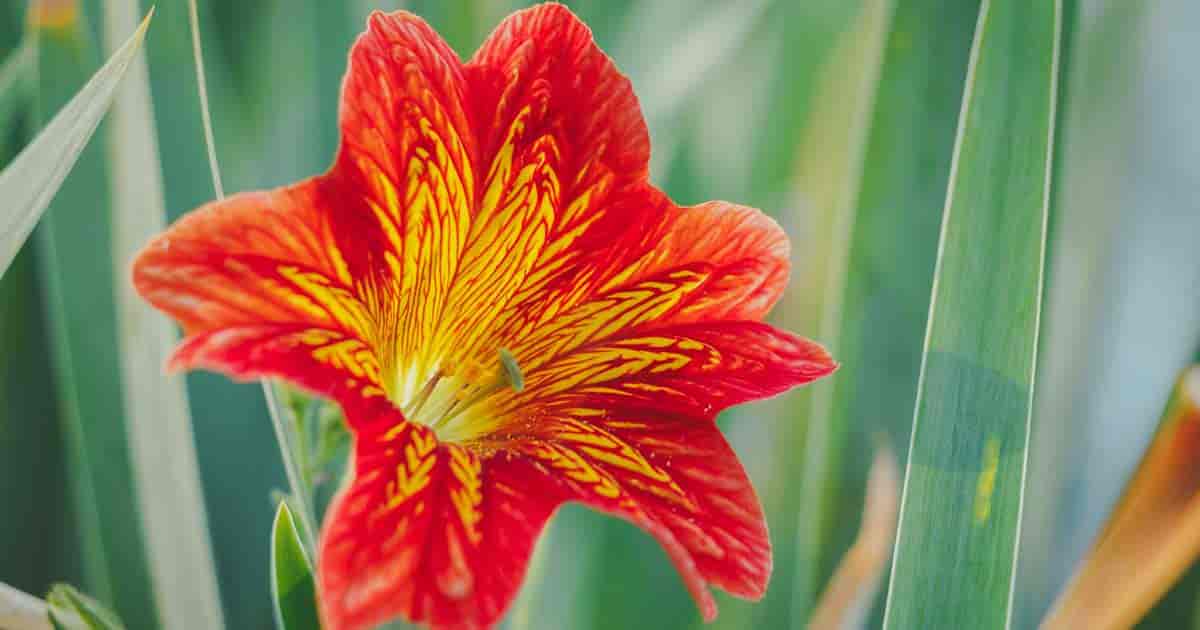
Salpiglossis, also known as the Painted Tongue, is a stunningly beautiful flowering plant that is sure to capture your attention. With its vibrant array of colors and intricate patterns, it is no wonder that Salpiglossis is a favorite among garden enthusiasts. But there is more to this breathtaking plant than meets the eye. In this article, we will delve into the intriguing world of Salpiglossis and explore eight unbelievable facts about this unique and fascinating species. From its origins and cultivation to its medicinal properties and ecological importance, you will discover why Salpiglossis deserves a special place in any garden or botanical collection. Get ready to be amazed by the wonders of Salpiglossis!
Key Takeaways:
- Salpiglossis, also known as “Painted Tongue,” is a stunning flower native to South America, displaying a wide range of vibrant colors and attracting bees and butterflies for pollination.
- With its trumpet-shaped blooms and impressive height of up to three feet, Salpiglossis brings a burst of color to gardens during summer and fall, adding vertical interest to landscapes.
Salpiglossis is also known as “Painted Tongue”
The stunning Salpiglossis flowers are commonly referred to as “Painted Tongue” due to the vibrant and colorful patterns on their petals.
Salpiglossis flowers can display a wide range of colors
From deep purples, blues, and reds to fiery oranges, yellows, and pinks, Salpiglossis flowers offer a kaleidoscope of colors that can brighten up any garden or floral arrangement.
Salpiglossis flowers are native to South America
Salpiglossis originated in the mountainous regions of Chile and Argentina, where they can be found growing in their natural habitat.
Salpiglossis is a member of the nightshade family
Salpiglossis belongs to the Solanaceae family, which also includes other popular plants such as tomatoes, potatoes, and petunias.
Salpiglossis flowers are known for their trumpet-shaped blooms
The unique shape of Salpiglossis flowers, resembling a trumpet or elongated cone, adds to their distinctive beauty and allure.
Salpiglossis flowers are pollinated by bees and butterflies
These striking flowers attract pollinators like bees and butterflies with their bright colors and abundant nectar, allowing them to play a crucial role in pollination.
Salpiglossis flowers bloom during summer and fall
With their peak blooming season occurring during the warmer months, Salpiglossis brings a burst of color to gardens and landscapes when other flowers may start to fade.
Salpiglossis flowers can grow up to three feet tall
With their tall and slender stems, Salpiglossis plants can reach impressive heights of up to three feet, adding vertical interest to garden borders and flower beds.
Conclusion
In conclusion, Salpiglossis, also known as the painted tongue flower, is a fascinating plant that captivates with its vibrant colors and unique petals. With its delicate beauty and ability to thrive in various conditions, Salpiglossis is a popular choice for many garden enthusiasts.
From its origins in South America to its varied colors and patterns, Salpiglossis has a rich history and offers a stunning display in any garden or floral arrangement. Its trumpet-like blooms and velvety texture combined with its ability to attract pollinators make it a valuable addition to any outdoor space.
Whether you choose to grow Salpiglossis in a garden bed or a container, it will undoubtedly add a touch of elegance and charm to your surroundings. As you explore the world of plants, don’t forget to include this extraordinary flower in your gardening endeavors.
FAQs
1. How do you pronounce Salpiglossis?
Salpiglossis is pronounced “sal-pi-GLO-sis.”
2. Where is Salpiglossis native to?
Salpiglossis is native to South America, primarily found in regions such as Chile and Argentina.
3. What kind of growing conditions does Salpiglossis prefer?
Salpiglossis thrives in well-draining soil, ample sunlight, and moderate temperatures. It prefers mild climates but can tolerate some heat and cold.
4. How often should Salpiglossis be watered?
Salpiglossis requires regular watering to keep the soil evenly moist. It is important to avoid overwatering, as it can lead to root rot.
5. Can Salpiglossis be grown in pots?
Yes, Salpiglossis can be grown in pots or containers. Ensure the container has good drainage, and use a well-draining potting mix.
6. Do Salpiglossis flowers attract pollinators?
Yes, Salpiglossis flowers are known to attract pollinators like bees and butterflies with their vibrant colors and sweet nectar.
7. How long do Salpiglossis flowers bloom?
Salpiglossis flowers typically bloom from late spring to early fall, providing a long-lasting display of color.
8. Can Salpiglossis be grown from seeds?
Yes, Salpiglossis can be grown from seeds. Start seeds indoors 6-8 weeks before the last frost or sow directly into the garden after the danger of frost has passed.
Was this page helpful?
Our commitment to delivering trustworthy and engaging content is at the heart of what we do. Each fact on our site is contributed by real users like you, bringing a wealth of diverse insights and information. To ensure the highest standards of accuracy and reliability, our dedicated editors meticulously review each submission. This process guarantees that the facts we share are not only fascinating but also credible. Trust in our commitment to quality and authenticity as you explore and learn with us.
